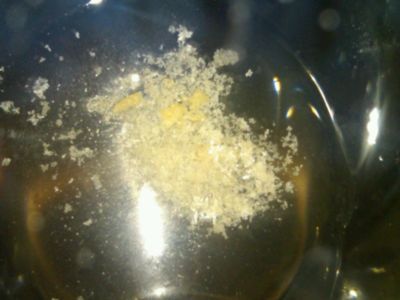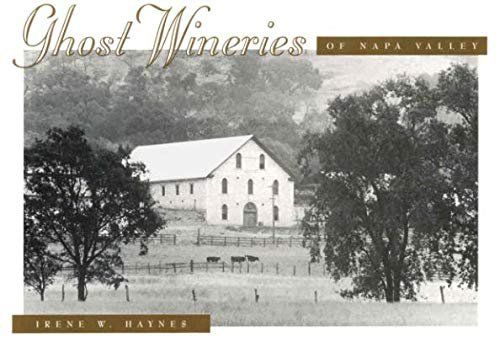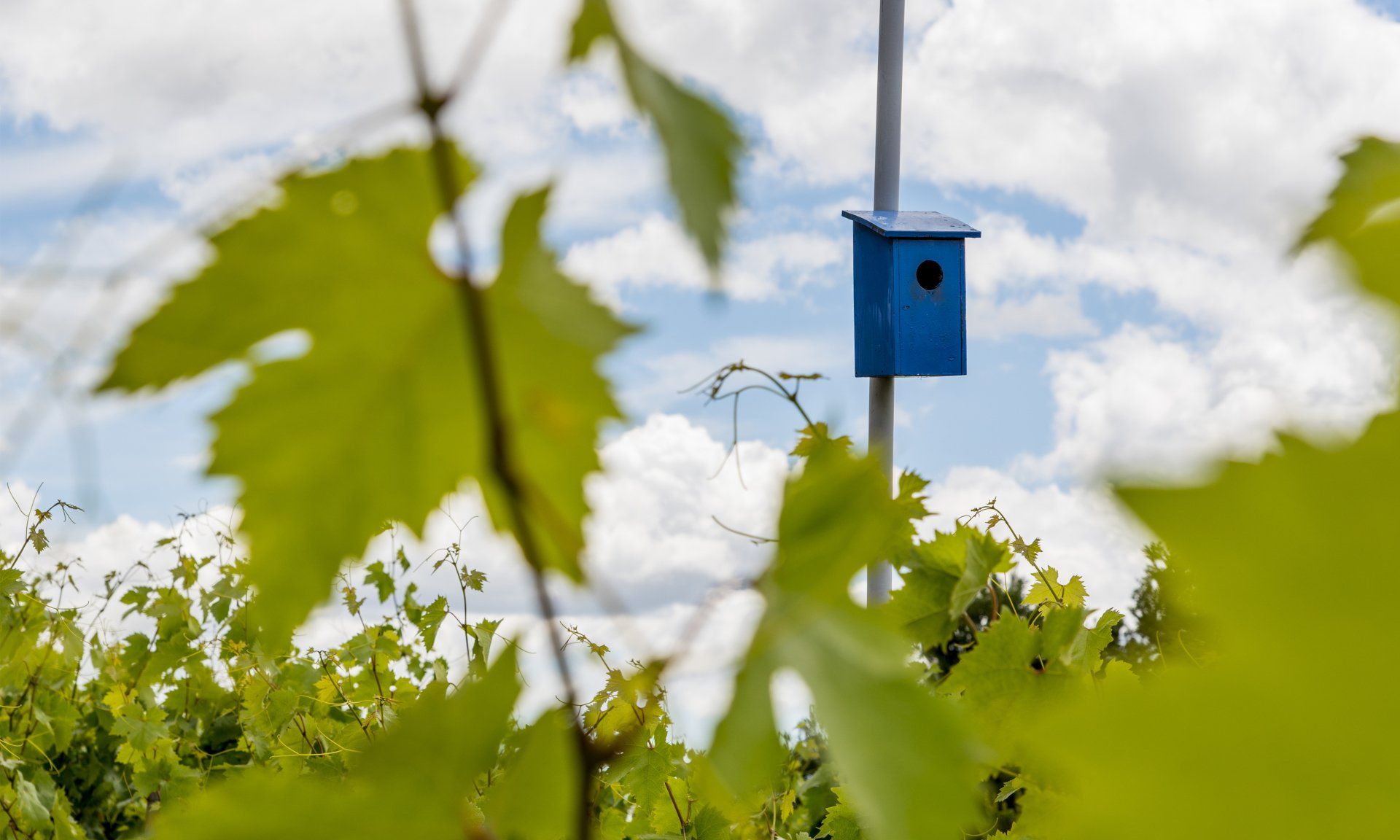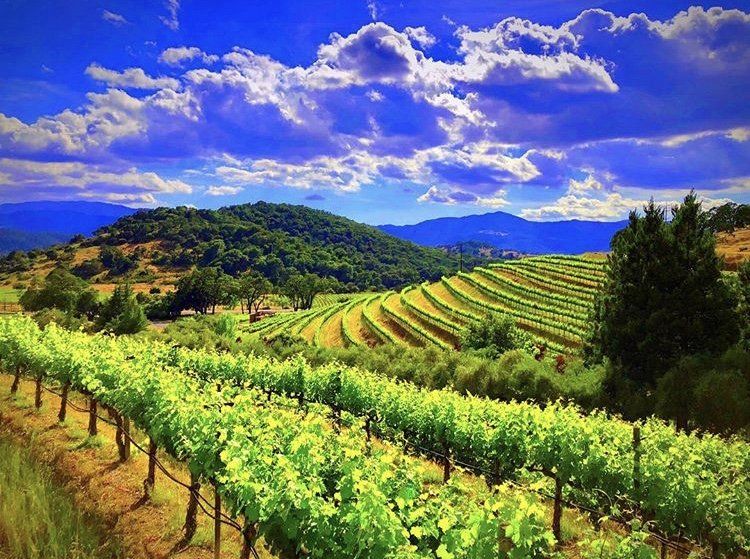What are wine diamonds?

You chilled your special bottle of Rosé and now there are crystals in your glass. What’s up?
In the wine industry those crystals are affectionately known as wine diamonds. What are they? The colorless, tasteless crystals are potassium bitartrate, which is the scary name for the Cream of Tartar (almost all of which is harvested from wineries) that you keep in your pantry. The reason that the industry calls these crystals in the glass wine diamonds is that it is a positive sign of a minimally processed wine that was made from fully ripened grapes.
In the old-world consumers are much more familiar with this condition and are not usually alarmed but in this country, we have become accustomed to crystal clear wine and so when we see something in our glass or attached to the cork it creates apprehension. Needless apprehension.
Tartaric acid is one of the three main acids found in wine grapes, and along with malic acid and citric acid provides the tartness in both grapes and wine. Most white wines go through a second fermentation, after the alcohol fermentation, that transforms malic acid to the softer-tasting lactic acid. Tartaric acid is relatively stable though and is therefore responsible for the maintenance of a finished wine's pH and its resistance to various kinds of spoilage.
Almost, if not, all wines have some level of dissolved tartaric acid in them, but its solubility is temperature-dependent. When a wine with dissolved tartaric acid is chilled to below 50˚ for an extended period, like in your refrigerator (most of which are set to 34˚) the wine diamonds will form and then it will not dissolve back again into the wine. You rarely ever experience this with red wines, due to the fact that they are rarely kept at 50˚ or less. White wines and Rosés however are often chilled in the refrigerator before they are served and so, minimally processed wines made from fully ripened grapes will form these crystals.
Most mass produced wines will cold stabilize the wine before it is bottled to ensure that these ‘wine diamonds’ are never found in their bottles. This process involves putting the wine into a large tank and chilling it down to as low as 28˚ for a couple of weeks before bottling. The problem is, that in addition to causing the tartrate crystals to form (so they can be filtered out), this process can strip more delicate nuances and subtleties from the wine along with the tartrates.
So…now you know that it is time to celebrate when you find wine diamonds in your glass. Or, if you prefer to not have that experience, just avoid keeping the wine in your fridge for an extended time period. Usually, chilling the wine to 45˚ - 48˚ will be the optimum temperature to enjoy all of the subtleties and nuances the wine has to offer without worry of too many (like;y none) wine diamonds in your glass. Depending upon whether your bottle is coming out of your chilled cellar or is at room temperature the time to reach this optimum temperature would be 20 – 60 minutes. Afterwards keep it in your favorite chilling bucket, but don’t submerge in the ice, and it will stay just right for quite some time.
Lastly, since all of Vine Cliff Winery wines are cork finished, if the bottle is stored or chilled upside down any crystals will form on the cork and with some level of gentleness can be removed entirely with the cork, leaving all the wine in the bottle crystal clear and full of all the flavors and aromas that we meant for the wine to have.
VINE CLIFF NOTES BLOG

VINE CLIFF'S ROLE IN NAPA VALLEY HISTORY. There are numerous wineries in the Napa Valley that have been designated 'ghost wineries' not because there have been sightings of anything out of the ordinary, but because these wineries were built between 1860 and 1900, when the first wine boom occurred. Vine Cliff Winery was one of these turn of the 20th Century 'ghost' wineries which had built a name for itself and its wines early in its history. In an article a few years ago, Kristie Sheppard, former executive director of the Napa Valley Historical Society, explained: “Ghost wineries have nothing to do with ghosts.” Rather, the wineries “tell us about our heritage” and live on as constant reminders of local history." In the early part of the 20th Century, nearly 700 wineries operated in California, many of them dating back to the 1800s. Many early Napa Valley wineries were first destroyed in the late 1800s by phylloxera. Vine Cliff was one of the wineries affected; the glory days of the early Vine Cliff era were waning. Its award-winning rieslings and clarets were no longer in production by the first decade of the 20th Century. The great San Francisco earthquake of 1906 was another trial, causing whole warehouses full of inventory to be smashed. The economically stressed times of World War I that followed did not make it any easier on the wineries to survive. The final blow was the 1919 passing of the Volstead Act, which banned all manufacturing, sales, and drinking of intoxicating beverages, known in American history as the Prohibition. By the time the Act was repealed in 1933, and with the beginning of the Depression, only about 40 wineries had managed to survive. Those that did had usually done so by producing liturgical wine, others by bootlegging. Vine Cliff by this time was no longer a functioning winery. It was not until the 1980s, more than 70 years later, that Vine Cliff rejoined the ranks of premium wineries of the Napa Valley after rebuilding and replanting of the vineyards at the Oakville estate. No mention of ghost wineries in the Napa Valley would be complete without reference to the book, “Ghost Wineries of Napa Valley” written in 1995 by the late Irene W. Haynes. Published by the Wine Appreciation Guild in San Francisco, This book is a pictorial history of 50 such wineries, some of which have been razed or rebuilt since. Vine Cliff is among the 50 featured by Ms Haynes. In her book’s introduction, she said that “these ghosts of the bygone century were the pioneers of Napa wines’ greatness of today.” We would agree. A copy of this book is on view at the Estate Tasting Room. If you visit Vine Cliff's Oakville Estate on the Silverado Trail, you will see the parts of the original winery (which was destroyed by fire), likely built by Chinese labor in the 1870s. All that is left from the original stone building is what is presently being used as the original cave now storing the chardonnay. This stone cave has stood the test of time and it is integrated well into the building for winemaking and tasting. Arrange an Estate Tour and Tasting

Since 1990, all of Vine Cliff's vineyards have been managed according to the principles and practices of sustainable viticulture, with an emphasis on natural farming. This has meant that no commercial pesticides, herbicides or artificial fertilizers have been used, when possible, on the vines for more than two decades and longer. Additionally 10 tons of of organic materials are returned to the soil as compost annually. The vineyards have native species of grasses planted as ground cover between the rows of vines. These are never ploughed under but only cut - allowed to naturally compost and further enrich the soil. The most ecologically complex and diverse biosystem has been established at Oakville Estate vineyards over the years and has resulted in the protection of its wildlife and habitat. We have created beneficial insect and wildlife habitat programs abound on our estate. Wildlife at Vine Cliff include native birds such as golden eagles, red tailed hawks, American kestrels and falcons. Species that have been part of the Oakville habitat are coyotes, blacktailed deer, cottontail rabbits, squirrels, California quail while a family of bobcats have been spotted crossing their way up through a vineyard at the top of the ridge to their watering hole in the hills. In recent years, Vine Cliff has installed solar power electric system panels with energy self-reliance and reducing greenhouse gas production as our goal. Vine Cliff grows a variety of fresh vegetables in its hilltop Garden for use in their wine and food pairing menu dishes.

While the entire Napa Valley is a spectacularly geologically diverse region, Vine Cliff Estate is in a magical place, according to a quote from Matt Kramer of The Wine Spectator . “There are places in the world that are so special that the wine that is produced there becomes renowned. The eastern side of Oakville, CA coined ‘Magic Mountain’ is one of those places. What emerges from this rocky, sun-drenched soil is like no other Cabernet in the world.” The rocky soils are the result of an event thousands of years ago when a single mountain in the Vaca Range split in two and collapsed, resulting in a rubble field of volcanic tuff rock. Vine Cliff Estate is in the canyon created towards the valley floor as well as, at the top of the Estate, the bench land that is so prized. Because we are on the eastern side of the valley our mountain vineyards are sun drenched while the western vineyards, along the Mayacamas Range, are in the shadow of the setting sun from late afternoon until setting. Our team takes stewardship of the ‘magic’ of this special Estate and spares no step to ensure that we craft wines that are true reflections of this extraordinary terroir.
